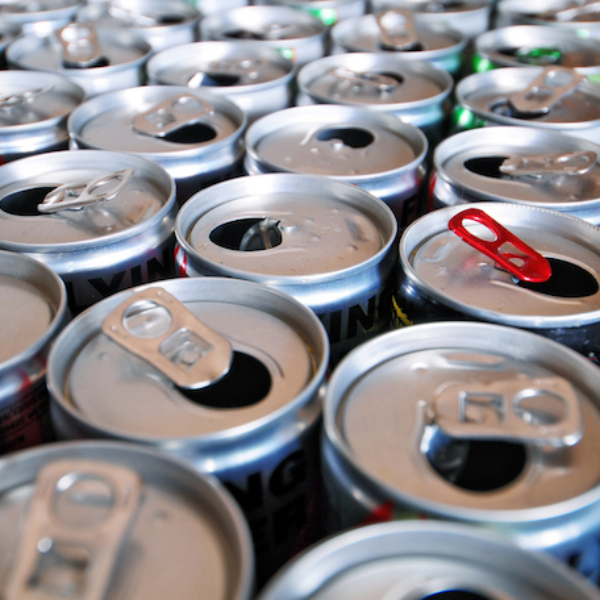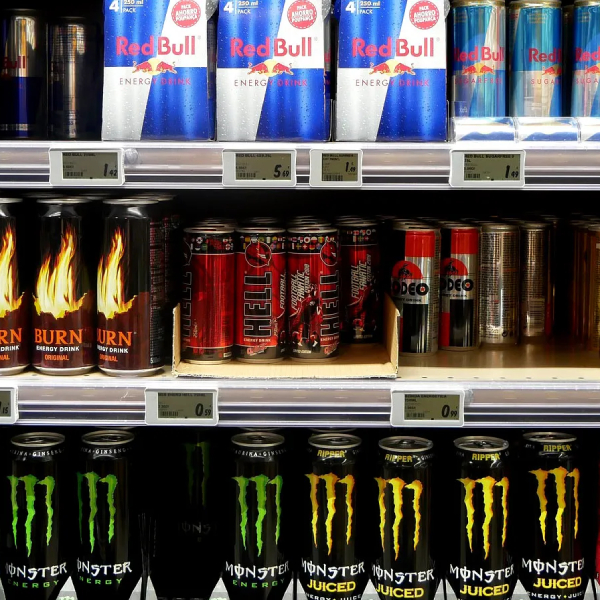The Advent of Modern Energy Drinks
With growing demands for quick energy solutions, the landscape of energy drinks took shape. The modern versions differ significantly from their predecessors.

The Emergence of Lipovitan in Japan
In 1962, Japan introduced Lipovitan. This tonic targeted workers needing an alertness boost. Made by Taisho Pharmaceuticals, it contained taurine, much like contemporary drinks. It was a small-sized drink but packed a powerful punch of wakefulness and energy.
Krating Daeng: The Basis for Red Bull
Krating Daeng emerged in Thailand in 1976. With a unique blend of caffeine and B-vitamins, it became a hit amongst executives. This drink laid the groundwork for Red Bull, which later revolutionized the global energy market.
The Cocaine-Era Tonics That Preceded Energy Drinks
Before modern energy drinks, unique tonics filled the gap for those seeking vitality. These tonics came in various forms, with some including ingredients like caffeine and even cocaine. This era was a prelude to the energy drinks we know today.
Coca-Cola: Where It All Began
In 1886, a chemist named Dr. John Pemberton created Coca-Cola. He intended it as a remedy for nausea and heartburn. The original formula contained kola nuts and coca leaves, known for their energizing properties. Although Coca-Cola evolved and removed cocaine from its recipe, its early days laid the groundwork for future energy solutions.
Dr. Enuf: Marketed as “The Original Energy Booster”
Dr. Enuf surfaced in 1949 in Chicago. Positioned as “The Original Energy Booster,” this drink had vitamins and caffeine. It promised to uplift the tired and weary. Even though it didn’t reach the iconic status of Coca-Cola, Dr. Enuf marked a shift towards targeted energy products.
The Evolution of Energy Drinks
Energy drinks have come a long way since their inception.
Red Bull’s Global Popularity and Expansion
Austrian businessman Dietrich Mateschiz’s partnership with Krating Daeng in 1984 was pivotal. The name change to Red Bull and its unique recipe won over Europe swiftly. Introduced in America in 1997, Red Bull surged, defining modern energy drinks.
The Rise of Competitors and Market Diversification
Competitors quickly followed, eager for a slice of the market. Brands like Monster and Rockstar offered different flavors and ingredients. Smaller companies innovated too, bringing variety to the shelves. Market diversification increased choices for consumers, changing the landscape of energy beverages.
The Impact of Energy Drinks on Health
The health effects of energy drinks can be significant. With intense marketing and the promise of instant energy, they often target young and active individuals. However, the ingredients in these drinks may have adverse health implications.
The Health Implications of Consumed Ingredients
Energy drinks contain high levels of caffeine and other stimulants like taurine and B-vitamins. While they can boost alertness, overconsumption can lead to heart palpitations, increased blood pressure, and sleep disturbances. The high sugar content also raises concerns over diabetes and obesity.
The Specific Concerns with Teen Consumption
The Allure of Energy Drinks
Teens often feel overwhelmed by their social lives and academic pressures. They turn to energy drinks to boost their energy levels. These beverages provide the promise of increased alertness and focus. Additionally, teens see their peers consuming these drinks, which adds to their appeal. However, many do not recognize the potential dangers hidden in each can. The high caffeine content can lead to restless nights and disrupted sleep patterns. Furthermore, the excessive sugar can contribute to weight gain and dental problems. As a result, young people might struggle with their overall health and well-being.

Consequences of Overindulgence
The negative effects of energy drinks can accumulate and create long-term consequences. Teens may experience heightened anxiety and mood swings from the stimulants. These fluctuations can interfere with their daily lives and relationships. Moreover, excessive caffeine consumption can hinder physical growth during these critical developmental years. Students might struggle to concentrate in school, which can impact their academic performance.
Additionally, energy drinks can foster a reliance on quick fixes rather than promoting healthy habits. Rather than turning to these beverages, teens can explore healthier alternatives. Staying hydrated with water and consuming balanced meals can provide sustained energy. Encouraging healthy choices might help them avoid potential pitfalls while maintaining an active lifestyle. Parents and educators should communicate these risks effectively to empower teens. By raising awareness, we can help young people make informed decisions about their health.
The Association between Energy Drinks and Alcohol
Combining energy drinks with alcohol is a growing trend among young adults. This mix can disguise the effects of alcohol, leading to excessive drinking and greater impairment. It increases the likelihood of risky behaviors such as driving under the influence. Health experts warn against this dangerous combination. While enjoying the best 7 brew energy drinks, it’s crucial to avoid mixing them with alcohol to prevent dangerous health risks and impaired judgment.
The Transformation of the Energy Drink Market
Seeing the growing concern over health impacts, the energy drink market is changing. Consumers are now more informed and cautious about what they consume. The shift is toward products that are natural with clear and honest labels.
Shift Towards Natural and Transparent Alternatives
Today’s consumers want health-friendly energy boosts. They prefer drinks made from natural sources like tea leaves and plant extracts. Market leaders are responding with drinks that tout low sugar, no artificial additives, and vitamins from organic sources. Brands now pride themselves on transparency, sharing detailed ingredient lists. Street King Energy Drinks could innovate by incorporating natural ingredients and transparency to meet today’s consumers’ demand for health-friendly energy options.
GO BIG and Guarana: Striving for a Healthier Energy Boost
GO BIG is a brand leading by example. It offers energy shots made with guarana, a natural Amazonian plant. This plant gives a longer-lasting, smooth energy lift without a crash. GO BIG’s products contain no added sugar or artificial ingredients. It’s a healthier alternative for those mindful about health and wellness.
The Future of Energy Drinks
The energy drink market continues to evolve with changing consumer preferences and industry standards. As we look to the future, two main trends are emerging: the shift towards natural ingredients and the adjustment to regulatory challenges.
Consumer Demand for Natural Options
A Shift Towards Natural Ingredients
People today prioritize cleaner and healthier energy solutions. They want to make informed choices about what they consume. Many individuals now seek drinks made from natural sources, as they notice the impact of their dietary choices. The demand for products infused with healthy ingredients has increased significantly. Drink options now often include powerful sources like green tea and guarana. These ingredients provide natural energy boosts without the need for artificial additives. As a result, brands recognize this shift in consumer preferences and adapt their offerings accordingly. They create new products that promise energy while minimizing health risks.
Visibility and Availability of Health-Conscious Drinks
Natural beverage options are becoming increasingly visible on store shelves. Retailers realize that consumers want convenient access to healthier alternatives. Consequently, they stock their shelves with a variety of drinks that support wellness goals. As a result, shoppers now discover numerous choices that cater to their preferences. Whether someone seeks energy for workouts or simply aims for better hydration, they find suitable options. This trend reflects a broader consciousness about health and well-being among consumers.

Furthermore, individuals are more willing to pay for quality ingredients, which drives innovation in the beverage industry. The growing interest in health-conscious products encourages brands to develop new flavors and formulations. Overall, the beverage landscape is evolving, offering choices that align with modern nutritional desires. Consumers now enjoy an impressive array of drinks that support their journey toward healthier living. To stop drinking energy drinks, consider exploring healthier beverage options that align with your nutritional goals and support your journey toward a balanced lifestyle.
Regulatory Challenges and Market Adjustments
The energy drink sector faces increased scrutiny. Laws and guidelines are tightening around the world. This is due to health concerns, particularly with ingredients like caffeine. The industry must navigate new rules and reformulate products. Safety is a top priority. Labels must be clear and honest about what’s inside. These changes ensure better choices for consumers. We may see new limits on who can buy these drinks and where they are sold. The market is adapting, promoting safety and awareness as it grows.